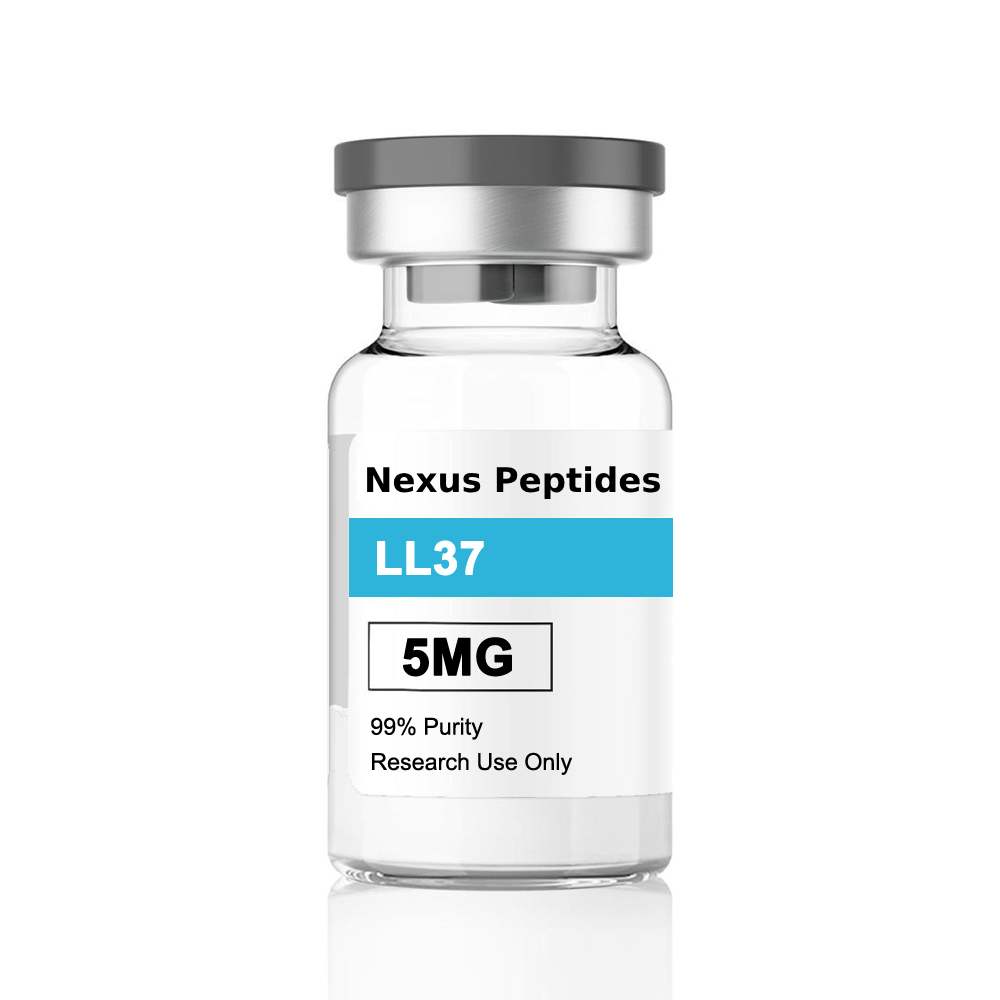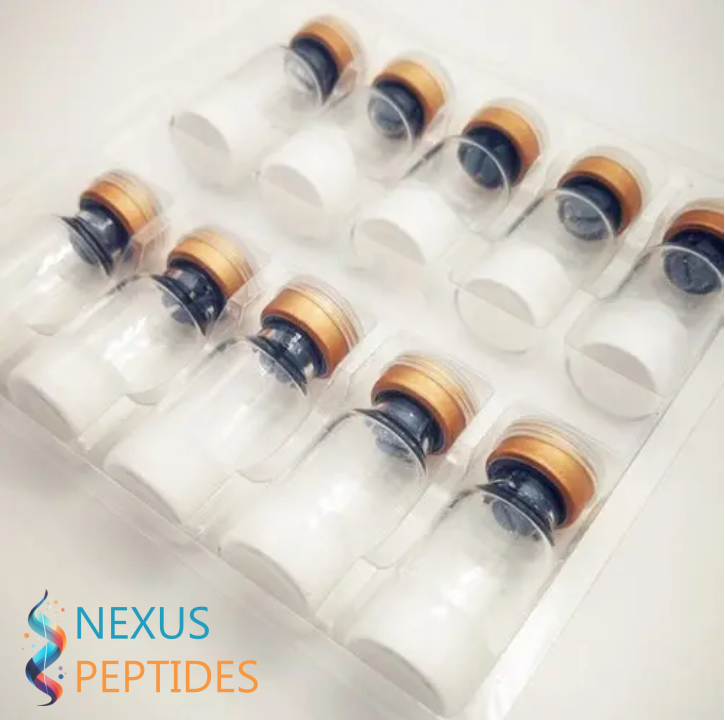Nexus Peptides
LL37: 5-10mg*10 vials
LL37: 5-10mg*10 vials
Couldn't load pickup availability
Share


Product Description: LL37
Introduction
LL37 is a naturally occurring antimicrobial peptide, primarily known for its role in the immune system. It is a member of the cathelicidin family and plays an important role in innate immunity. LL37 is of particular interest to researchers due to its potential ability to interact with a variety of biological processes, including immune responses, inflammation, and antimicrobial defense mechanisms. This peptide is typically used in laboratory settings to study its potential effects on these biological systems. It is important to note that LL37 is intended solely for research purposes.
What is LL37?
LL37 is a cationic peptide composed of 37 amino acids and is derived from the larger precursor protein hCAP-18 (human cathelicidin antimicrobial protein). LL37 is primarily produced by various cells in the body, including neutrophils, epithelial cells, and keratinocytes, and is involved in defending the body against bacterial, viral, and fungal infections. The peptide has been found to possess a variety of properties, including antimicrobial, anti-inflammatory, and immunomodulatory effects. Its role in the innate immune system has made it an important subject of study in the context of infectious diseases and immune system regulation.
Potential Different Names
- LL37 (generic name)
- Cathelicidin
- hCAP-18-derived peptide
- Human cathelicidin antimicrobial peptide
Chemical Formula
- C149H240N40O37S2
Structure
LL37 is a linear peptide consisting of 37 amino acids with a relatively simple structure. The peptide is characterized by a high content of positively charged amino acid residues (such as arginine and lysine), which contribute to its cationic nature. This cationic charge is essential for its interaction with negatively charged components of microbial cell membranes, which is key to its antimicrobial activity. The peptide also features a hydrophobic C-terminal region, which facilitates its interaction with lipid bilayers, enhancing its ability to disrupt microbial membranes. The full amino acid sequence of LL37 is:
AA Sequence:
- GGGGGAGAAAGGGAGGAAGGAAGGGGAAGGGGAGGAAGGAGG
How Does It Work?
LL37 functions as part of the body's innate immune response, with multiple proposed mechanisms of action. One of its primary functions is to bind to and disrupt the membranes of various pathogens, such as bacteria, viruses, and fungi. The positively charged regions of LL37 interact with the negatively charged components of microbial cell membranes, leading to membrane destabilization and ultimately cell death. This antimicrobial activity allows LL37 to act as a first line of defense against infections.
In addition to its antimicrobial properties, LL37 has been shown to have immunomodulatory effects, interacting with immune cells like macrophages and neutrophils. It can influence the production of various cytokines and chemokines, which are involved in regulating the immune response. Furthermore, LL37 is known to have anti-inflammatory properties, which may help modulate the body’s immune reaction to infections and other stimuli.
LL37 has also been shown to promote wound healing by influencing cell migration and angiogenesis, contributing to tissue repair processes. Research continues to explore its full range of interactions and functions, with studies focusing on its role in inflammatory diseases, infection control, and tissue regeneration.
Conclusion
LL37 is a versatile and multifunctional peptide with significant interest in scientific research, particularly in the fields of immunology and microbiology. Its role in the innate immune response, antimicrobial activity, and potential effects on inflammation and wound healing make it a valuable subject for ongoing study. While LL37 has been implicated in a variety of biological functions, further research is needed to fully understand its mechanisms of action and potential applications in various fields of science.
Disclaimer
LL37 is for research purposes only and is not intended for human or animal consumption. It is not approved for medical, therapeutic, or diagnostic use. This product description is intended for informational purposes only and does not make any health-related claims. Researchers should ensure proper handling of LL37 in accordance with all relevant safety protocols and regulatory guidelines.


